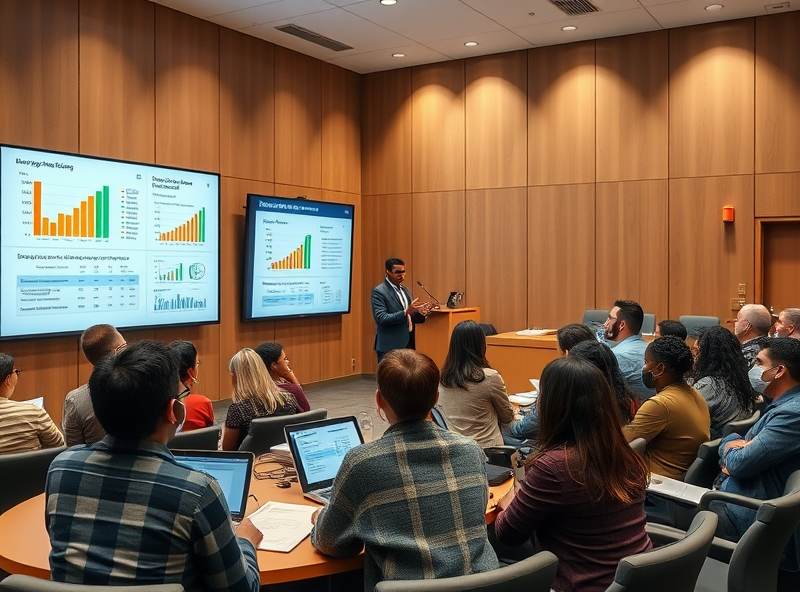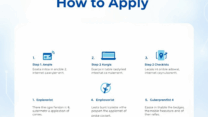
Maximizing the Impact of State and Local Grants in the U.S.
Performance-Based Funding: A Smarter Way to Allocate Grants

Performance-based funding (PBF) is transforming how state and local governments in the U.S. allocate grants, ensuring that taxpayer dollars are directed toward programs that deliver measurable results. Instead of distributing funds based solely on historical spending or political considerations, PBF ties funding to outcomes—such as improved education rates, reduced homelessness, or increased job placements.
This approach not only promotes accountability but also encourages innovation. For example, local workforce development programs that successfully help residents secure long-term employment may receive increased funding, while underperforming programs are re-evaluated or restructured. This model helps ensure that public funds are used efficiently and effectively, leading to better services for communities.
A key benefit of performance-based funding is that it fosters data-driven decision-making. Governments must collect and analyze performance metrics, which improves transparency and helps identify what works. Over time, this leads to smarter investments and more impactful public services.
To implement PBF successfully, governments need robust data systems, clear performance indicators, and collaboration with stakeholders. States like Colorado and Tennessee have already adopted performance-based models in education and workforce development, showing promising results.
For more information on how performance-based funding is being applied in U.S. education, visit the National Conference of State Legislatures (NCSL): https://www.ncsl.org/education/performance-based-funding-for-higher-education
Broadening Horizons: Expanding Grants Beyond Social Welfare

Traditionally, state and local grants in the U.S. have been heavily focused on social welfare programs—such as housing assistance, food security, and healthcare access. While these are undeniably essential, there’s growing recognition that expanding the scope of grants can lead to more holistic community development and long-term economic resilience.
One of the most impactful ways to broaden the use of grants is by investing in areas like workforce development, small business innovation, green infrastructure, and digital equity. For example, grants that support technical training programs in underserved areas can help close the skills gap and boost local employment. Similarly, funding for small business incubators can stimulate entrepreneurship and diversify local economies.
Another promising area is environmental sustainability. Local governments can use grants to support renewable energy projects, improve public transportation, or develop climate-resilient infrastructure. These investments not only create jobs but also improve quality of life and reduce long-term costs associated with environmental degradation.
Moreover, expanding grants into arts, culture, and education can foster stronger community identity and engagement. Programs that fund public art installations, community theaters, or STEM education initiatives can have ripple effects on civic pride and youth development.
By diversifying how and where grants are applied, state and local governments can create more dynamic, inclusive, and forward-thinking communities. For those interested in how federal grants are currently distributed and evolving, the U.S. Government Accountability Office (GAO) provides valuable insights: https://www.gao.gov/grants
Ultimately, expanding the purpose of grants beyond traditional social welfare allows for more strategic, long-term planning that benefits everyone—not just those in immediate need.
Transparent Practices: Building Public Trust in Grant Use

Ensuring transparency in the use of state and local grants is essential for building and maintaining public trust. When communities see how funds are allocated and used, it fosters accountability, encourages civic engagement, and helps prevent misuse or mismanagement of public resources.
One of the most effective ways to promote transparency is through open data portals. These platforms allow the public to access detailed information about grant recipients, funding amounts, project goals, and outcomes. For example, the U.S. government’s website [USAspending.gov](https://www.usaspending.gov) provides a comprehensive view of federal spending, including grants distributed to state and local governments.
Additionally, regular performance reporting and community feedback mechanisms can significantly enhance transparency. By publishing quarterly or annual reports that detail how grants are being used and what results are being achieved, agencies can demonstrate responsible stewardship of public funds. Public forums, surveys, and digital dashboards also allow residents to voice concerns or suggestions, making the grant process more inclusive and responsive.
Training and capacity-building for local officials are equally important. Educating grant administrators on compliance, ethical standards, and communication strategies ensures that transparency is embedded in every stage of the grant lifecycle.
Ultimately, transparent practices are not just about accountability—they are about building a culture of trust and collaboration between governments and the communities they serve. By embracing openness, state and local agencies can maximize the positive impact of every dollar spent.
Empowering Local Voices: Collaborative Decision-Making for Better Outcomes

Maximizing the impact of state and local grants in the U.S. requires more than just funding—it demands inclusive, community-driven decision-making. When local voices are empowered and actively involved in the grant planning and implementation process, the results are more aligned with real community needs, leading to sustainable and measurable outcomes.
Collaborative decision-making brings together local governments, community organizations, residents, and other stakeholders to co-create solutions. This approach not only increases transparency and trust but also ensures that the allocated funds address the most pressing issues, such as affordable housing, public health, education, and infrastructure.
One effective strategy is the use of participatory budgeting, where community members directly decide how to spend part of a public budget. Cities like New York and Chicago have successfully implemented this model, resulting in projects that reflect local priorities and foster civic engagement.
Additionally, forming local advisory boards with diverse representation helps ensure that historically marginalized voices are heard. These boards can provide critical insights into community-specific challenges and recommend tailored interventions.
To support this collaborative framework, it’s essential to invest in capacity-building for local leaders and organizations. Training in grant management, data analysis, and community engagement equips stakeholders with the tools they need to make informed decisions and track progress effectively.
By centering local voices in the grant-making process, we can build stronger, more resilient communities that thrive on shared responsibility and mutual respect.
For more on participatory budgeting and community engagement strategies, visit the National League of Cities: https://www.nlc.org/article/2021/06/29/participatory-budgeting-a-tool-for-equity-and-engagement/







